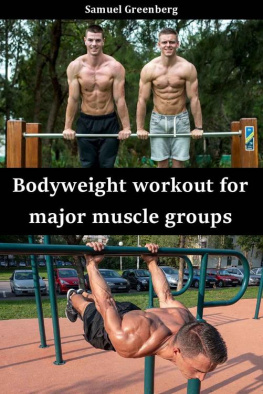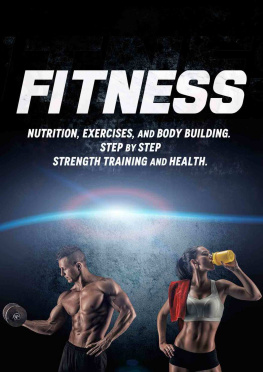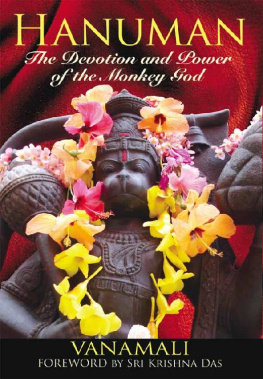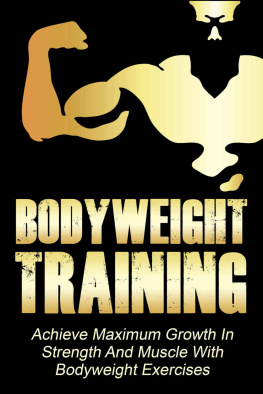Disclaimer
The exercises and advice contained within this manual may be too difficultor dangerous for some people, and the reader(s) should consult a physicianbefore engaging in them.The author and publisher of this book are not responsible in any mannerwhatsoever for any injury which may occur through reading and followingthe instructions herein.
Hanuman Power-A guide to the ancient strength traditions of India
A Marcus Quijas book April 2016.All rights reserved.Copyright 2016 The Quiet Power.co.uk.
No part of this book may be reproduced or transmitted in any form or byanymeans, electronic or mechanical, including photocopying, recording, orbyany information storage and retrieval system, without permission in writingfrom the publisher
Copyright 2016 The Quiet Power.co.uk.

CHAPTER 1: INDIAN PHYSICAL CUTURE........10
SAMPLE JOINT OPNENING ROUTINE...38
SHISASANA...101
SURYA NAMASARA...103
SCIENCEE BEHIND THE SWING ...158BRAHMACHAYRA...163
CLOSING THOUGHTS...199REFERENCES/GLOSSARY..204
FOREWORDMarcus Quijas Hanuman Power, takes you on a journey of his personal discovery into theworld of the ancient strength traditions of India.
His early inspirations for this book come from a mixture of sources like
Vincent Giordanos DVD series called The Physical Body and YouTube videos made by wellknown mace users.
Because he was deployed overseas, first of all in the army and afterwards in private security,Marcus found himself having to improvise equipment from items he had scavenged,scrounged, found and then build by himself.
First came the mace. Marcus started training with his own homemade mace following his observations from the videos that hed been watching. The next step was to make a pair ofJori clubs and learning how to use them. Following his homemade mindset, Marcus createdhis first pair of Jori Clubs from a couple of traffic cones, steel pipe and a lot of concrete.Marcus recalled his experiences with these clubs during his visit to Perth where we first met.All I can say is that these clubs sounded like absolute monsters according to Marcusdescription.
Varanasi in the northern India suddenly arrives on the horizon for Marcus Quijas, apart frombeing one of the holiest and most ancient Indian cities, Varanasi is also the home of theWrestlers Akhara (gym).
Varanasi is also the home of the Gada (Mace) and the Jori Clubs that Marcus had discoveredon videos recorded by Vincent Giordano and myself.
So Marcus decided to visit Varanasi where his passion and commitment to researching andwriting about not only the use of the Gada and Jori Clubs, but the whole underlying culture ofthe Akhara.
Hanuman Power A Modern Guide to the Ancient Strength Traditions of India will introduceyou to Kushti and Indian Physical Culture as seen through the eyes of a committedpractitioner who has actively trained on-site, experiencing the bare foot connection with theearthen floors and simple equipment that the Pahlavans use in their daily training.
When I say the equipment is simple, I have to make it very clear that development oftechnique is crucial and instrumental in its successful use, and Marcus provides in-depthinsights and explanations in all aspects.
To my mind I think that Marcus Quijas commitment and personal proficiency in these ancientarts of India, gives him the authority to record and present the spirituality, history, mindset,diet and training methods of the Pahlavan in his book Hanuman Power A Modern Guide tothe Ancient Strength Traditions of India.
In saying this I feel confident that all who take an interest in their physical welfare, will findvaluable information in the following pages.Paul Taras WolkowinskiOwner of www.indianclubs.com.au and Indian Clubs Academy.

HANUMAN POWER
This statue became a familiar sight for me in my time in Varanasi and was my first encounter with HANUMAN. In this holy city, stauesand portraits of Hanuman abound, depicting him ass holding hisGada and mountain or in devotion to Lord Rama.
To the wrestlers he is the ideal to live up to.I
NTRODUCTION
This book is first and foremost a dedication to all the Wrestlers and Pahlavani from India.Without them this book would not exist. My intention was to bring to light and modernisethe sparse and dated works on Indian Physical culture. By making it more accessible Ihope to ensure that this form of sport, exercise and lifestyle gets the audience it deserves.I have researched and collected as much information as I can up until this point but thereare still many unanswered questions for me. The guys I met in India had been so openand receptive I hope I can honour them appropriately with this book and not undersell theirachievements in anyway.
Let me state there is nothing new or innovative in this book. As the old saying goes nothing is new under the sun. The exercises In this volume are the living example of this,many going back at least a thousand years or more. However I feel that practicalinformation with regards to how to use these exercises and information is the missingingredient. Many people are given examples of these exercises, but not how to implementthem into their own training. This is the task this book has set out to at least partlyaddressed. I personally have found being given examples to follow and then making up myown mind has helped in my own training evolution.
This is my take on the exercises from my own perspective. This perspective may be rightor wrong, either way I hope it raises some questions in your mind as to how I came tothese conclusions.
This book came about as I went through continuous trial and error trying to figure out howto use these exercises. Hopefully you can find something of use that strikes a chord andyou agree with. If not, too late no re-funds haha!
I decided to write this book as I felt there was very little information on the exercises usedby the Kushti wrestlers of India that could be used by every day trainers. Most of theinformation consisted of do the exercises for this number of reps with no real depth ofthought behind the reasoning. There were no books written on how to perform thetechniques. Much of what I learned was from analysing what videos there were of themovements and thinking why are they moving that way? Then I would apply thesetechniques to my own training. Put simply I copied what I saw. This worked well initially butI still felt I had gaps in my knowledge. This lead to me going to India, to the source so tospeak to find the hidden knowledge...
Of course there was no such thing. Aside from a few technique corrections and pointers, Iwasn't too far off the mark. What I learnt was that technique was the key and so was hardwork much like in any effective training programme. Revolutionary stuff.
Many of the exercises in this book date back over 1000 years and may well even be older.When I first saw them performed in Vincent Giordanos excellent video series, ThePhysical Body. A quick search of the internet found very little information. Carl Gotch thefamous wrestler had shown Jake Shannon the mace and from there people like Rik Brownand Kevin Wikse had begun to swing maces and put them in the public eye. Bruce Leefamously used the Hindu squat and Push up and mentioned them in his book the Dao ofJeet Kune Do.
Still there was not much to go off of. Eventually Paul Taras Wolkowinski went to India as part of his study of club swinging in all its forms. I decided that it was time for me to go andsee for myself







![Cotter - Kettlebell training: [95 exercises for strength, toning, stamina, and weight loss]](/uploads/posts/book/196732/thumbs/cotter-kettlebell-training-95-exercises-for.jpg)






